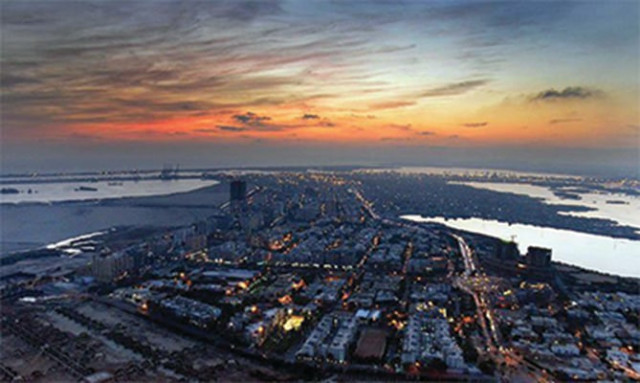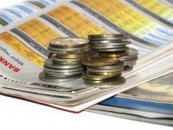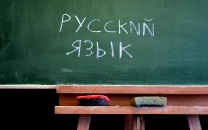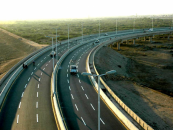Are GDP growth prospects bright?
Despite many positives, LNG crisis and fiscal deficit can decelerate economic progress

The Asian Development Bank (ADB) says Pakistan’s economy can grow 2% in the current fiscal year ending June 2021 after contracting 0.4% last year.
The government has also set almost a similar growth target at 2.1%. But we can safely expect a higher growth rate.
The most important driver for a higher-than-expected growth is the pace at which global economy is going to recover in 2021. The International Monetary Fund (IMF) has forecast 5.2% and Morgan Stanley 6.4% global growth. The IMF makes such projections very cautiously and takes into account the behaviour of all variables.
However, the IMF has clarified that its forecast rests not only on economic factors but also on public health “which is inherently difficult to predict”. So, we can expect that global economic growth this year could vary vastly from the numbers being projected right now.
That said, a majority of reputed analysts agree on the possibility of a sharp recovery in the global economy. This recovery could help accelerate Pakistan’s economic growth beyond 2% if domestic politics and governance remain impressive.
The second driver of higher-than-projected growth is that among top economies of the world, only China posted positive growth, at 2.3%, in 2020 against global recession of 4.4%. Its 2021 growth is being projected at a stunning 9%.
Such a high growth in China, our neighbour and long-term development partner through the China-Pakistan Economic Corridor (CPEC), can potentially help Pakistan’s economy grow higher than expected.
But here domestic political stability plus a favourable geopolitical environment will be required for harvesting the partnership dividends of a solid Chinese economic growth. The third driver of Pakistan’s economic growth beyond 2% could be the ongoing drive to revive the construction sector through incentives and policy focus.
The government has already extended the tax amnesty scheme for those who invest in the construction sector till December 31 and the State Bank of Pakistan (SBP) is vigorously pushing banks to offer as many housing loans as possible. It has also launched a web portal for sorting out any and all complaints of those applying for mortgage finance under the Naya Pakistan Housing Scheme.
The Federal Board of Revenue, on its part, has made tax regime for the housing sector more investment-friendly.
In the case of kick-starting the economy via accelerated construction activity, the real dividend would come in the shape of more-than-projected growth if implementation of the “Housing for All” scheme keeps going and does not meet any roadblocks – political, administrative or legal.
To make that happen, the government will have to work honestly and effectively to achieve the much-needed political stability.
South Asia growth
There is no denying the fact that the Pakistan Tehreek-e-Insaf (PTI) government inherited a myriad of structural economic problems and that Covid-19 hit the country just when it was busy fixing some of those problems.
But as the government is going to enter its third year, people rightly expect it to deliver on promises of economic growth and development, affordable inflation and low unemployment levels.
Even if Pakistan’s economy grows 2.5% this fiscal year, as the SBP believes it can in the best case scenario, it would be far lower than the average growth of 7.1% projected for the entire South Asian region.
And, that would also be too little compared to growth rates of India, Bangladesh and Sri Lanka. For 2021, the ADB has projected 8%, 6.8% and 4.1% growth rates respectively for these three nations.
It is true that the growth in India and Sri Lanka would come in the backdrop of 9% and 5.5% recession respectively they braved in 2020. But then the case of Bangladesh is different. Bangladesh’s economy is estimated to have grown 5.2% in 2020.
So, how much fast Pakistan’s economy recovers this year, its pace would pale in comparison to the regional countries and that is where political problems emerge.
Political capital
Such disturbing forecasts – once they materialise – would not only erode PTI’s political capital, but will also reduce the level of exemplary support it enjoys in the powerful establishment.
But as long as the government is able to improve the external sector fundamentals and keep inflation under check, it can manage that possible erosion in its political capital.
Joblessness, for the time being, is not growing as fast as in the past because of a remarkable rebound in the industrial sector. That rebound (plus year-on-year increase in large-scale manufacturing output in first five months of current fiscal year) has also brightened the scope of higher-than-targeted economic growth.
To make the most of this strong recovery, the government has rightly focused on export enhancement. Merchandise exports are now growing moderately and services’ exports a bit faster – and remittances continue to rise at a swift pace.
All this put together will eventually help improve the current account balance, reducing the country’s need for short-term foreign funds. In the first half of current fiscal year, Pakistan has reported $1.1 billion current account surplus against a deficit of $2 billion in the same period of last year.
Obstacles
Despite a number of positives that show the economy is poised to grow at a higher-than-targeted rate this year, two things can potentially decelerate the economic progress.
First is the ongoing LNG crisis which has already resulted in an overall gas crisis across the country and started hitting industrial supplies as well and the second is an increase in fiscal deficit.
In the first five months of current fiscal year (Jul-Nov 2020), the fiscal deficit stood at 2.8% of gross domestic product (GDP), up from 2.1% in the same period of last year. Gas crisis, if not overcome, will slow down the pace of industrial recovery and hit exports.
And fiscal deficit, if not brought under control, will increase the government’s need to borrow more from banks – and that will crowd out the private sector, further compounding the challenges being faced by industries and businesses.
The writer is a mechanical engineer and is doing master’s
Published in The Express Tribune, February 8th, 2021.
Like Business on Facebook, follow @TribuneBiz on Twitter to stay informed and join in the conversation.



















COMMENTS
Comments are moderated and generally will be posted if they are on-topic and not abusive.
For more information, please see our Comments FAQ